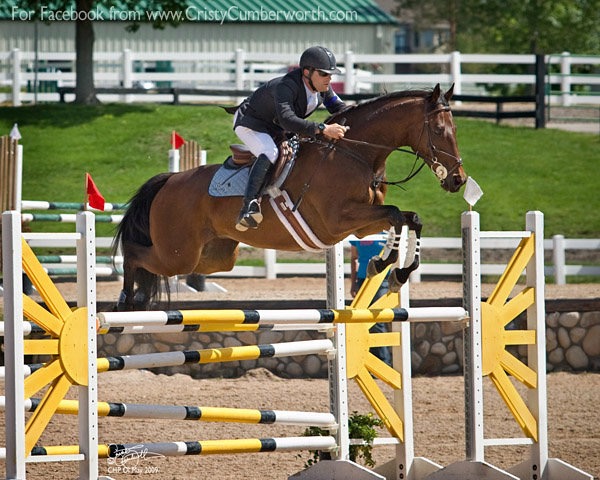Hi all- I’m looking for a little collective advice from the group.
As background (sorry if it’s lengthy, I wanted to try to address any questions up front): 12 year old DWB gelding. Healthy and hale, in a program. He is ridden five to six times a week, jumped once, maybe twice a week- once by me in a lesson, once by the pro. The jump sessions by the pro involve jumping once around a course, so maybe eight jumps, by me a couple of different patterns during a lesson so maybe 10 to 12 jumps. Jumps are set between 2’3" and 2’6". We do not jump to height at home. We show once, occasionally twice a month for a total of no more than 15 shows a year. At shows he does one warm up class during the week with the pro and my AO division. Horse receives all recommended maintenance and but for what I describe below has been happy and healthy and seems content with his job.
We stepped up to the 3’3" in 2021 and did that with no health issues. Stepped up to 3’6" in 2024 and showed that height until July when he came in from the field after regular overnight turnout with some swelling at the top of his right front tendon. Diagnosed as a check ligament strain. Thankfully he was never lame. We rehabbed to vet’s specs, farrier got on board and adjusted his angles and after a number of months of rehab and legging up have been able to get back to showing the 3’3" for the last three months.
I would like to move back to the 3’6". Mostly for selfish personal reasons relating to goals and dreams, etc. and because due to my and his ages, it’s a little bit of now or never. Vet has okayed going back to that height.
Here (finally) are my questions: due to already having had a check ligament injury, is he more likely to have another one if we move up heights? Does this type of an injury suggest he may be more prone to other injuries at the higher height? In general, does jumping higher make him more likely to be injured? I know the more we ask of them the more likely they are to get injured, but is there a significant difference in the strain on his body between 3’3" and 3’6"? I don’t want to sacrifice his health and soundness by following my silly dreams.
Any thoughts, anecdotes or suggestions would be greatly appreciated!


